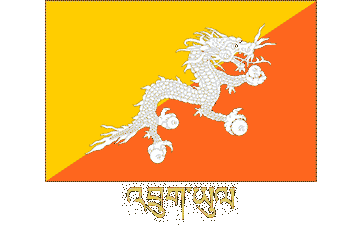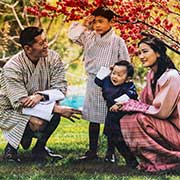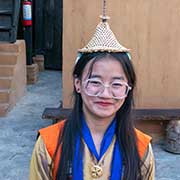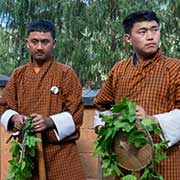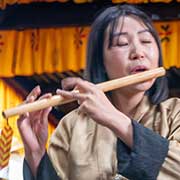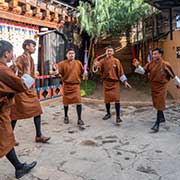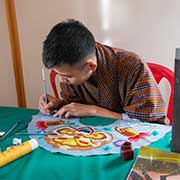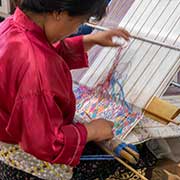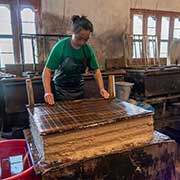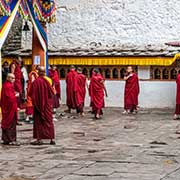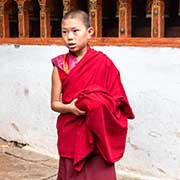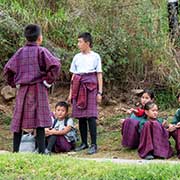Photos of The people of Bhutan, Bhutan
The people of Bhutan
The majority of the people of Bhutan are the Ngalop (meaning “earliest risen” or “first converted”) people of Tibetan origin who migrated to Bhutan as early as the ninth century. In the past, outsiders referred to them as “Bhote” or “Bhotiya”, which meant “people of Bod (Tibet)”, leading to confusion. It may have continued in “Bhutan” as the country is named by outsiders, likely deriving from the Tibetan name “Böd” for Tibet. It could also be from Sanskrit Bhoṭa-anta (“end of Tibet”), referring to Bhutan’s position on the southern extremity of the Tibetan plateau and culture.
you may then send it as a postcard if you wish.
However, in Bhutan itself, the country’s official name since the 17th century is Drukyul (“country of the Drukpa Lineage” referring to the dominant Buddhist sect), or “Land of the Thunder Dragon”. People refer to themselves as Drukpa, “Dragon people”, while the term for the Kings of Bhutan is Druk Gyalpo (“Dragon King”). The present Druk Gyalpo is Jigme Khesar Namgyel Wangchuck, the Fifth King of Bhutan.
The Ngalop people introduced Tibetan culture and Buddhism to Bhutan; they are the dominant political and cultural element in modern Bhutan and now identify as Bhutanese. Dzongkha is their language, descended from Old Tibetan. It is now the country’s national language, written in Tibetan script. Bhutanese traditional dress was introduced during the 17th century by Zhabdrung (“High Lama”) Ngawang Namgyal, the founder of the Bhutanese state, giving the Bhutanese a unique identity. To preserve and promote its cultural heritage, Bhutanese must wear the national dress in government offices, schools, and formal occasions.
There are other ethnic groups in Bhutan: the Sharchop (“Easterners”), of mixed Tibetan, South Asian, and Southeast Asian descent and living in the east; Lhotshampa (“Southerners”), who are mostly Hindu and of Nepali descent. Many of those have fled or been deported after they protested against restrictions on residence and employment and the requirement of national dress. Some tiny aboriginal or indigenous tribal populations live in scattered villages throughout Bhutan, and Tibetans who had fled in the wake of the 1959 Tibetan Rebellion against the oppressive Chinese occupation of Tibet.


